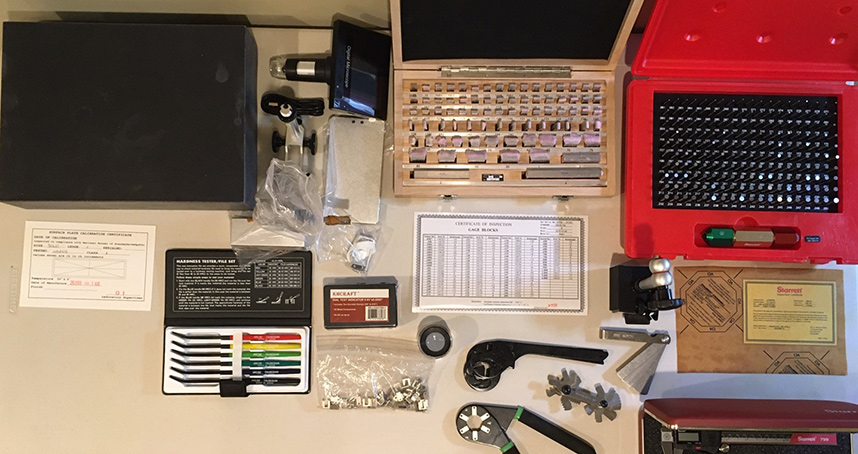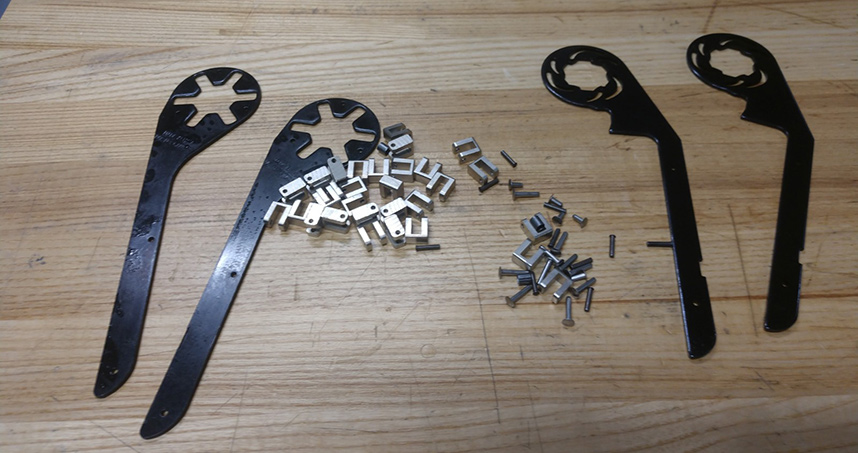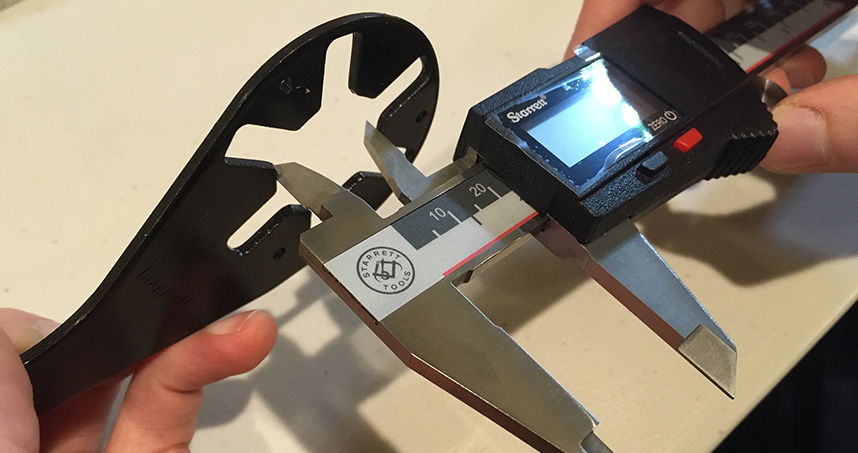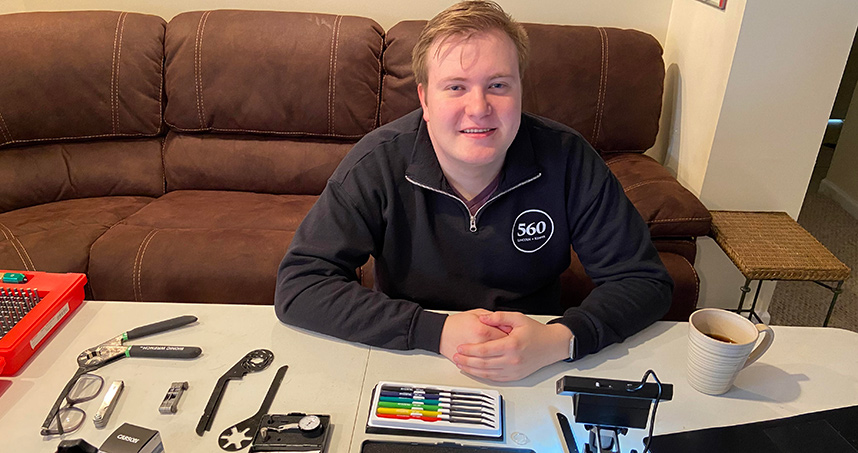MaDE Capstone Quickly Adjusts to COVID-19 Realities
Instructors reimagined the design class, and assembled kits shipped to students around the world to produce manufacturing fixtures for a bionic wrench
Like many courses in the Segal Design Institute’s manufacturing and design engineering (MaDE) program, DSGN 386: Manufacturing Engineering Design is a hands-on, interactive class where students and instructors work together. And like other experiential courses at Northwestern Engineering, the capstone experience was redesigned to fit the new, COVID-19 realities of online classes.
To keep the course’s rigor and learning outcomes, Clinical Professor Dan Brown and MaDE program director David Gatchell reimagined an online, but hands-on, design for manufacturing experience. They sourced and assembled measurement tools and components to send to students, enabling them to virtually manufacture fixtures for a bionic wrench assembly simulation in CAD for the final project.
The Segal team worked quickly.
With concerns over the pandemic rising in mid-March, Gatchell contacted Brown about adjusting the class. Normally, the shop-heavy course requires students to take all theory learned in earlier classes and put it to practical use.
Within a day, Brown had a vision for giving the students what they needed to work remotely, based on his experience in industry and over 10 years of teaching. Brown, also the director of the Ford Prototyping Lab at Segal, immediately engaged the Segal Shop team to assist and coordinate the challenge of getting the tools to the students.
“Dan is very good at being solution-focused,” said Gatchell, a Charles Deering McCormick Distinguished Clinical Professor. “Just, ‘we’re going to get this done. I see a way we’re going to do it.’”
By early the next week, the plan was approved. And now, around 40 kits have been sent to students as far away as Hong Kong and Turkey.
The kits include measuring equipment and bionic wrench parts allowing teams of students to complete the objectives of the course: document how to reverse-engineer the wrench, develop the component drawings in 3D CAD, and build a virtual wrench. Following this reverse engineering experience, the students are than challenged to design a manufacturing fixture for the wrench, and eventually produce as many wrenches as they can within a set amount of time using CAD to simulate and model the optimal design for manufacturing.
Instead of physically building a fixture, students in teams will build and assemble virtual models in CAD, with the virtual parts modeling the assembly in a realistic simulation, as part of the final deliverable.
“What we’ve been able to do because of the power of CAD is to create 3D models and have the students work virtually in teams,” Brown said. “It’s the only way we can really give this class and challenge the students in the critical thinking necessary to design a robust and lean manufacturing strategy.”
Some staples of the course remain the same. There will still be lectures twice per week and professional mentoring. And, there may be a bonus: the students’ heavy work with CAD and virtual teamwork will provide them the experience to work with partners and clients from all over the world in their professional careers.
And though the class isn’t exactly how it’s normally intended -- to provide a heavy dose of hands-on machining and assembly -- Brown and Gatchell are confident the switch to CAD simulation will be an excellent skill to learn for the students’ future careers.
“We’ll accomplish the same goals and teach them the same lessons, only in a different way this quarter,” Brown said. “This is certainly a challenge, but Dave and I are professionals, and we are committed to delivering the best classroom experience despite the challenges.”



